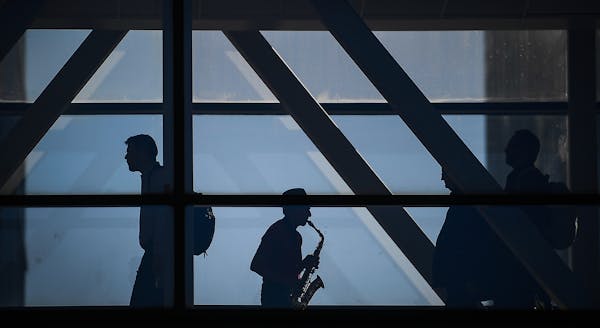I would like to offer a defense of the skyways as well as an alternative solution to Eric Dayton's foot traffic concerns.
What makes a destination attractive to prospective visitors, referring to everyone from Twin Citizens contemplating where to spend their Saturdays to domestic and international tourists, isn't bustling streets. Bustling streets are the reward for an attractive destination.
A primary component of an attractive destination is uniqueness — something people can't see, do, experience or bungee jump off of anywhere else.
The skyways are one of the Twin Cities' precious few unique components. Love 'em or hate 'em, they stick in visitors' minds — visitors who then go home and tell the tale of their fanciful journey through the skyways to friends, rewarding Minneapolis with the unparalleled, profile-raising power of word-of-mouth marketing.
Busy streets with glimmering shops don't have the same effect, nor do music festivals, burgeoning brew pub scenes or sportball venues that occasionally attract a marquee event.
If we don't innovate, evolve and take risks, we're never going to reach beyond middling status as a tourist destination and an appealing place to live. In the spirit of risk-taking, I would like to offer an alternative proposal for revitalizing downtown Minneapolis' streets:
Pedestrianize them.
I'm no city planner, but just as an example, we could block off the section from Hennepin Avenue to Third Avenue South and from 10th Street to Fourth Street. If we wanted to get crazy, we could also pedestrianize short arms that bump out and connect the Convention Center, U.S. Bank Stadium and Target Field to the core area.
Imagine that downtown and Minnehaha Park had a baby. Think of food trucks, which have been a huge boost to getting feet back on the streets, being able to park in Portland-like clusters, with tables and chairs around, without having to jockey for parking meters. Or the crowds that art and music festivals would bring. Visualize restaurant sidewalk seating that isn't tiny tables pressed up against the building, only a few feet from pedestrians squeezing by and four lanes of roaring traffic.
It's fair to say that relentless revving, honking, music-thumping, distracted-driving traffic is one of the reasons people retreat to the skyways and then head home as soon as their workday or event ends rather than use downtown to stage their evening and weekend plans.
Let's make the area overwhelmingly pedestrian-friendly. Creating a free rein pedestrian area won't bring everyone down from the skyways, but it will go a long way toward making street-level walking more attractive. And we'd be the only major city in the U.S. to have a full-blown pedestrian zone, as opposed to a narrow mall, creating another unique component for captivated visitors to relate to their friends.
It's not a quick fix, but it would be far less expensive and damaging than demolishing the skyways and relocating many of the 600+ small businesses located on skyway level.
If your expression is a mix of disbelief and horror right now, rest assured I didn't pluck this concept from a fever dream. Much larger, logistically more challenging cities are currently doing the same thing, including Paris, Madrid, Hamburg and Mexico City. Our city planners won't be wearing pencils and erasers down to nubs trying to figure out how to make this work. Fantastic examples exist for us to emulate.
It's worth noting that pedestrian malls in the U.S. have a long history of not working out. There are two big differences between those failed endeavors and downtown Minneapolis. First, business- and retail-heavy downtowns empty out at night, because there simply isn't enough to keep people around. Our downtown is a mixed-use area, with three sports venues, a convention center, numerous hotels, live theater, music venues, bars and restaurants to keep people downtown after business hours.
Second, the number of downtown residents is growing rapidly. With new residential buildings multiplying and the North Loop so close by, we have a much better chance at making a pedestrian zone work.
A potentially much larger problem will be convincing blue chip national chains to swallow the rent for the prime street-level and two-story retail spaces in central downtown. Carving those spaces down to more reasonable sizes (50th and France and the Midtown Global Market are great examples) could alleviate this challenge, making the area the more authentic leisure and shopping zone that Dayton described.
Knowing firsthand the agonizingly slow process of convincing retailers to open in premier locations, I think we'll need to hurdle this retail space issue long before the first street is blocked off.
Leif Pettersen (@leifpettersen on Twitter) is a travel and tourism marketing professional, champion juggler and author of the history/travel book "Backpacking with Dracula."
Cut down on electronic waste in Minnesota
In Minnesota, statistical gloom amid the hope of a progressive-led boom


